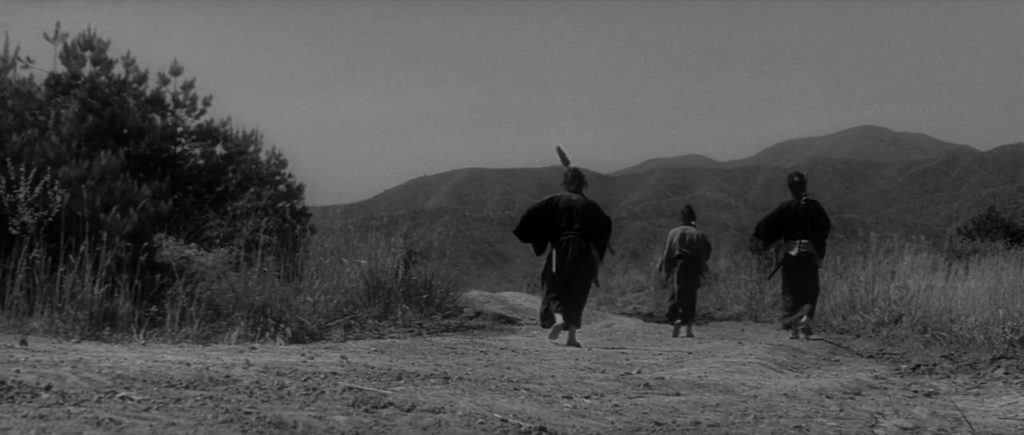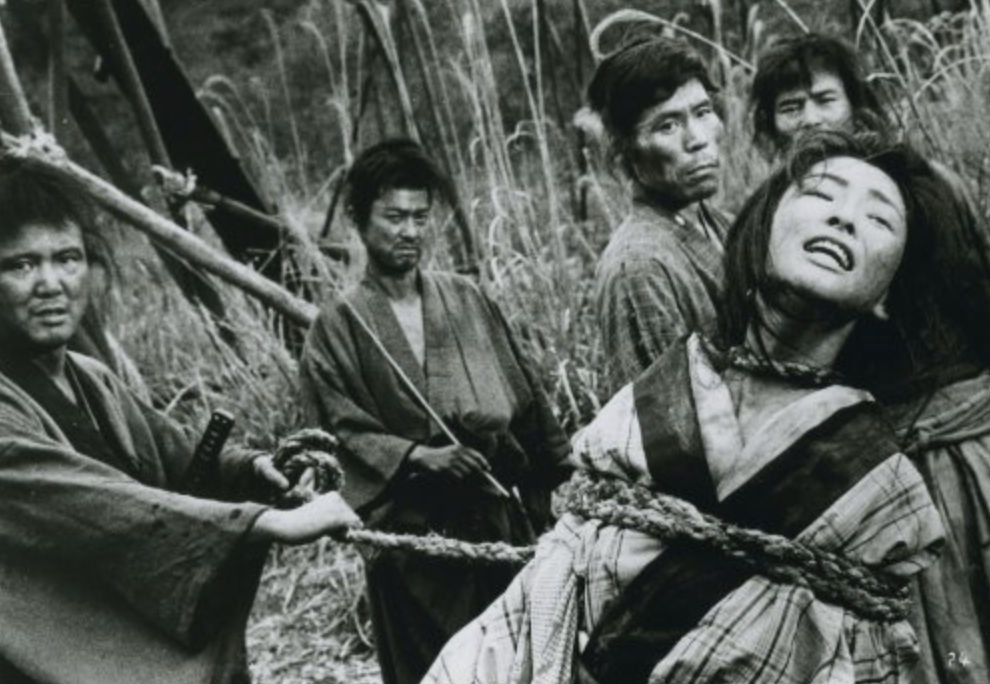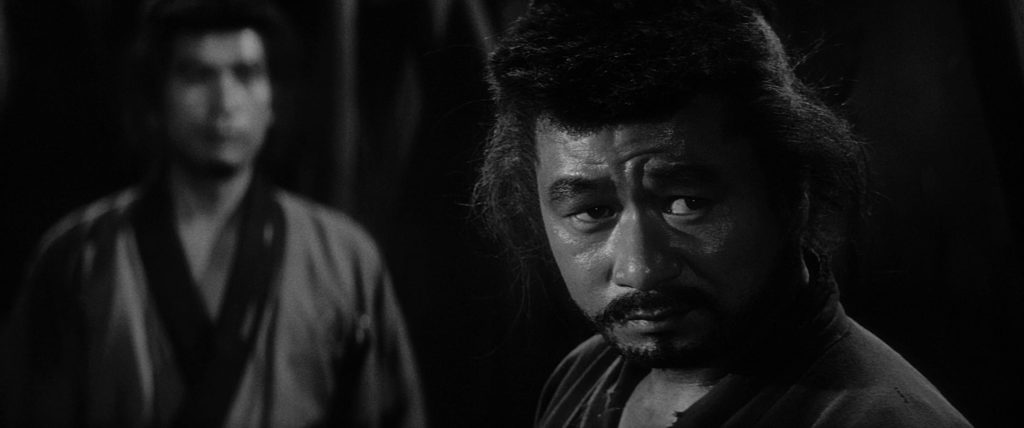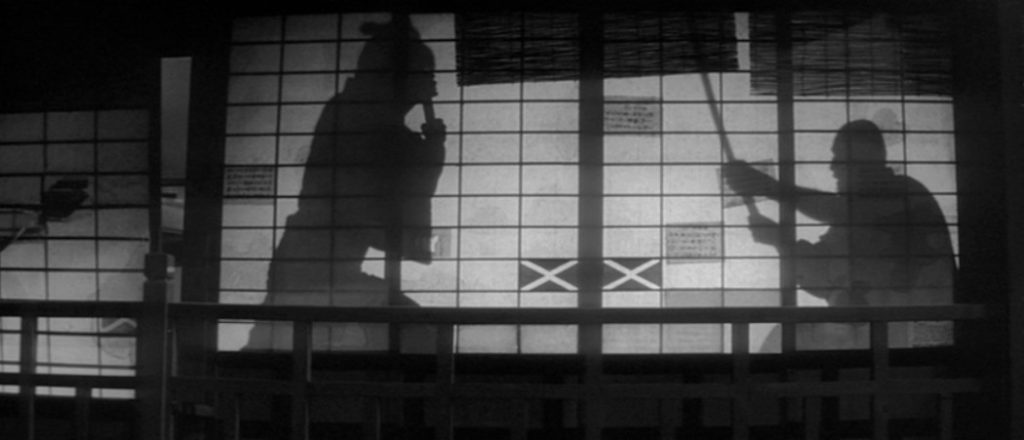| Dan Howard |

Three Outlaw Samurai plays at the Trylon Cinema from Sunday, August 13th, through Tuesday, August 15th. Visit trylon.org for tickets and more information.
Looking at the history of cinema, I gravitate the most toward the works produced in the golden age of Japanese cinema during the ‘50s and ‘60s. Although I’m not overly fond of Westerns, a lot of samurai films have been heavily influenced by them. Even Akira Kurosawa took inspiration from John Ford for his own films and vice versa. With a plethora of films and TV episodes made on the influence of Seven Samurai (such as The Magnificent Seven, A Bug’s Life, and The Mandalorian), Hideo Gosha’s Three Outlaw Samurai is among the best.

In Gosha’s debut feature film, a roaming samurai, Shiba Sakon, finds his way into a hideout of village peasants who have kidnapped the magistrate’s daughter. He decides to stay and watch the scenario play out, exchanging negotiation and defense strategy tips for a place to sleep. In an attempt to get his daughter back after his residing samurai, Kikyô Einosuke, refuses to assist him, the magistrate recruits a samurai locked in their jail cell by the name of Sakura Kyojuro, a seemingly lazy country bumpkin-type samurai. In a struggle for basic human rights like food, water, and better living conditions—things that the magistrate seems to deny them—the three samurai must decide what they will fight for: the lives and justice of the peasants or their own selfish ideals.
On the surface, Three Outlaw Samurai appears cynical with dwindling morality and a somewhat callous nature, but at the heart of this tale of poverty and injustice is a prime example of the triumph of morality and the human conscience, where these samurai overcome their own selfishness and fight for something greater than themselves. Have we seen stories like that before? Of course. However, as much of an age-old cliché as it seems, when done right the theme of fighting for a higher cause ages like fine wine and never truly gets old.

As the film plays, we get a feel for each one of the samurai in their varying motives and ideals. We begin to piece together these characters and get to see the inner spirits they seem to have forgotten, or rather, are realizing among the peasants’ fight in slow-burning epiphanies of self-discovery. Sakura Kyojuro (flawlessly portrayed by Isamu Nagato) however, is the biggest standout. At the beginning of the film, Shiba Sakon convinces him to switch sides when he’s sent to fight against the peasants by the magistrate. What struck me was not the mere fact that he switched sides. It was that Sakura didn’t hesitate to side with the peasants once he knew the full story. Sakura, in many ways, plays the biggest role in the outcome of the peasants’ fight. At heart, he’s not particularly selfish in the same way as Sakon or Kikyô are. He’s simply a drifter, but a drifter with a conscience and confidence. He has no delusions about himself and who he is. Sakura Kyojuro proves to be one of my favorite—and most overlooked—samurai in the genre as well as one of my favorite characters in cinema.
Serving as a prequel to the TV series of the same name (a series which seems to be currently lost to time), Three Outlaw Samurai possesses a number of characteristics that many mid-century samurai films included, but what makes it stand out among the best of the era is the film’s significant tonal shift from a cold, harsh reality to being filled with hope amidst a changing of the tide, with the samurai being guided by their conscience and discovering their morality as they dig deeper into the troubles of peasant lives. I’ve often heard this film being compared to Akira Kurosawa’s Seven Samurai, where it is usually called a “cynical version.” Samurai helping peasants in need—sounds familiar, right? Kurosawa’s influence is undoubtedly felt throughout the film, which was released 10 years after Seven Samurai, and Gosha manages to craft a criminally underrated samurai story in the spirit of those who came before him and paying tribute to them.

There are few filmmakers where their first feature is considered their best—Richard Kelly’s Donnie Darko, Kevin Smith’s Clerks, Orson Welles’s Citizen Kane, and so on. In the case of director Hideo Gosha’s first feature, Three Outlaw Samurai remains his Citizen Kane; his masterpiece. Upon my first two viewings of the film, I’m reminded of why the samurai films of the era continue to fuel my passion for cinema. They convey a feeling that can’t fully be described with words alone—a sense of honor and courage along with the stunning cinematography, performances, and fight sequences gracing the screen. It’s impossible to not be immersed and fall head over heels for these masterworks, and Three Outlaw Samurai is, in my humble opinion, a prime example of cinema at its finest.
Edited by Olga Tchepikova-Treon
